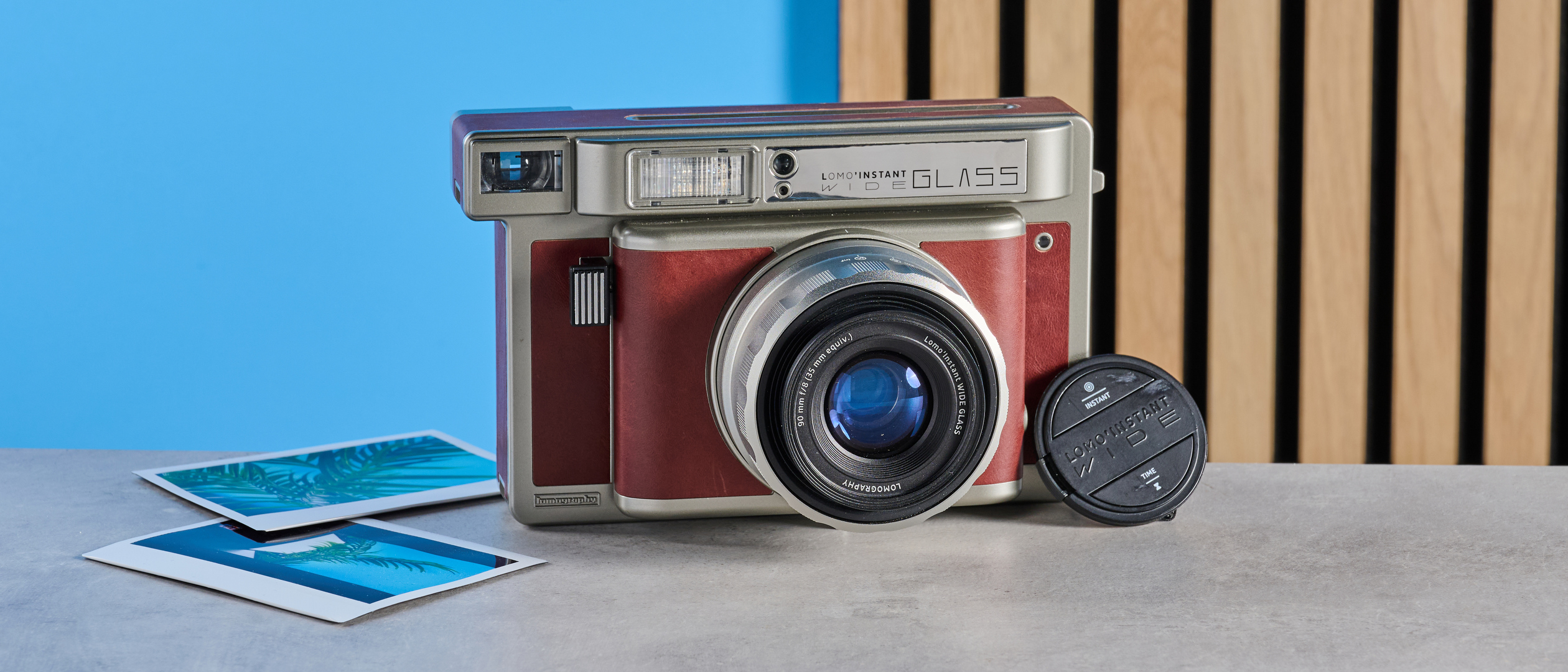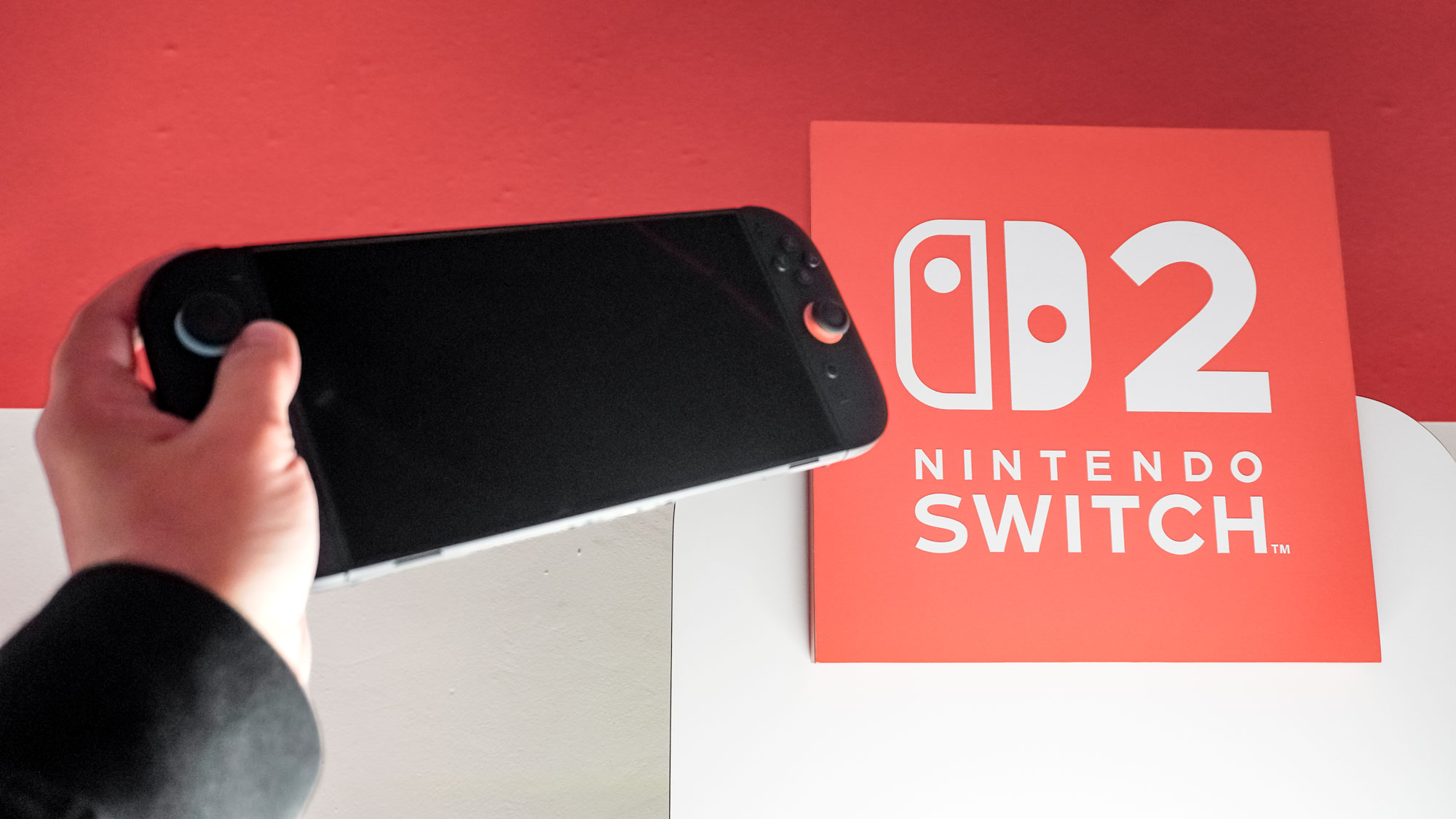Tom's Guide Verdict
The Lomography Lomo’Instant Wide Glass impresses with its glass lens that takes sharp, detailed images in bright conditions. It sports a premium, retro design and sturdy build quality. It’s easy to use and you can get creative with long or multiple exposures too. But there’s no selfie mirror, it’s slightly awkward to handle, and it uses disposable batteries.
Pros
- +
Sharp, detailed images
- +
Premium build
- +
Retro design
- +
Straightforward controls
- +
Multiple and long exposures available
Cons
- -
No selfie mirror
- -
Awkward handling
- -
Uses disposable batteries
Why you can trust Tom's Guide
I’ve tested a lot of instant cameras — the good, the bad, the ugly — so I know what to look out for to help you make the right decision. One thing I can say confidently is that if you’re on the lookout for a wide format camera, you won’t go wrong with the Lomography Lomo’Instant Wide Glass.
Sporting a retro design in a ridiculously large body, the Lomo’Instant Wide Glass takes beautiful photos in bright conditions. Thanks to the glass lens, the photos come out sharp with plenty of detail. Its controls are fairly straightforward too, and you can also take long or multiple exposures.
What stops it from being the best instant camera, though, is its lack of selfie mirror, use of disposable batteries, and awkward handling.
For the complete breakdown, read my full Lomography Lomo'Instant Wide Glass review.
Lomography Lomo'Instant Wide Glass review: Cheat sheet
- What is it? A wide format instant camera with a glass lens (its predecessor used plastic)
- Who is it for? Anyone who wants to capture more of a scene with wide film and wants a retro-looking camera
- How much does it cost? The Lomo’Instant Wide Glass is available for $279 / £249 at Lomography
- What do we like? The sharp, detailed images it takes, premium build, retro design, straightforward controls, and multiple and long exposure modes
- What don’t we like? Awkward handling, lack of selfie mirror, and disposable batteries
Lomography Lomo'Instant Wide Glass review: Specs
Specs | Lomography Lomo’Instant Wide Glass |
|---|---|
Price | |
Lens | 90mm retractable |
Viewfinder | Yes |
Exposure control | Automatic |
Shutter | 8s - 1/250s (Auto) | 30s (Bulb) | 1/30s (Fixed shutter speed mode) |
Aperture | f/8, f/22 |
Shooting range | 0.3m / 0.6m / 1-2m / ∞ |
Flash | Yes, built-in |
Flash refresh time | Not specified |
Flash range | Not specified |
Self-timer | Yes |
Power | 4 x AA batteries |
Dimensions | 7.3 x 4.6 x 4.6 inches |
Weight | 2lbs |
Film used | Instax Wide film |
Film development time | Up to 90 seconds |
Cost per print | Approx. $1.11 |
Lomography Lomo'Instant Wide Glass review: Price & availability
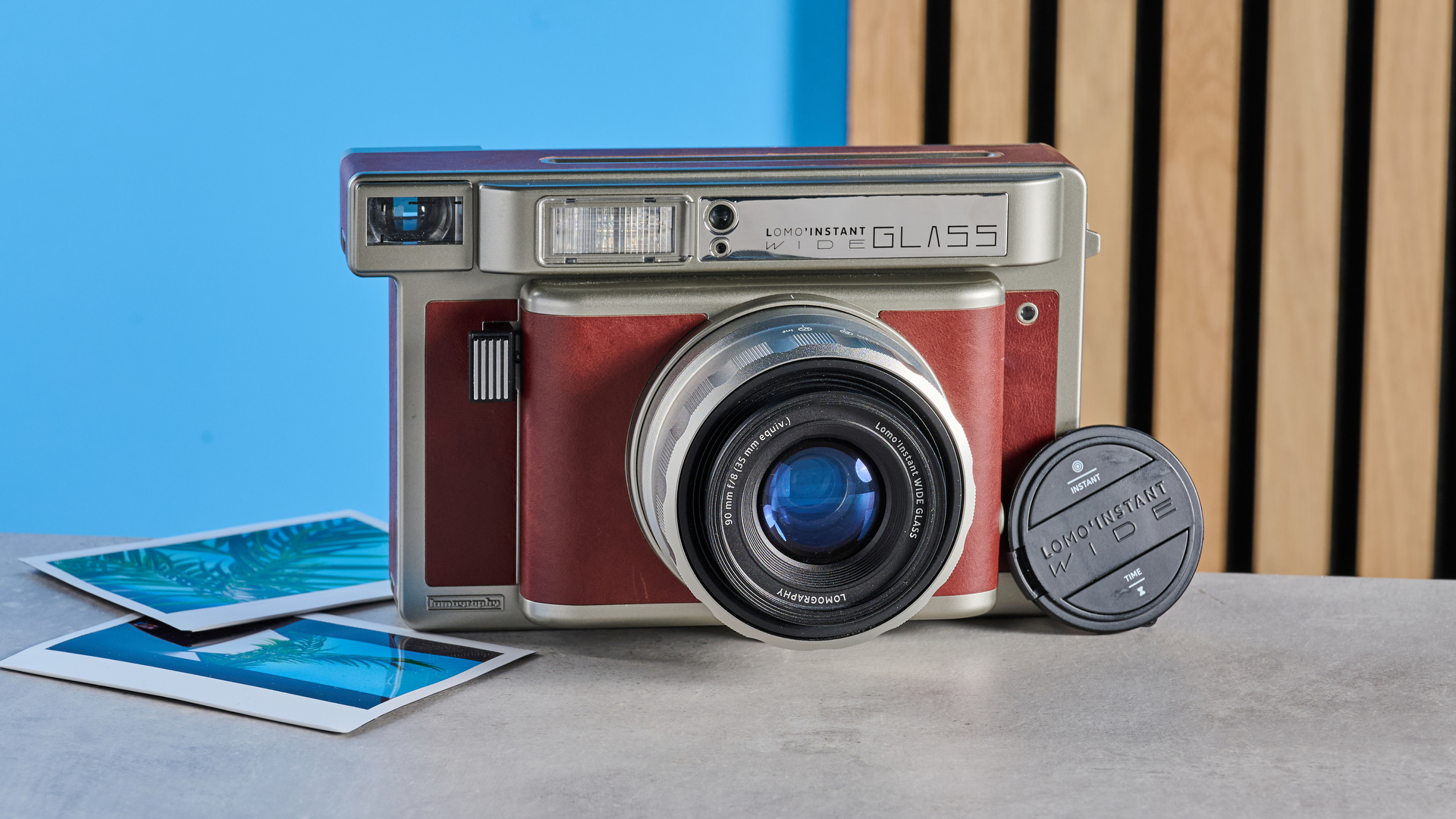
The Lomography Lomo’Instant Wide Glass succeeds the Lomo’Instant Wide and introduces a glass lens which takes sharper, more detailed photos. Naturally, it’s more expensive than the non-glass version.
The Lomo’Instant Wide Glass has a retail price of $279 / £249 at Lomography. That’s $110 more than the price of the first-gen model ($169). It’s also pricier than its direct competitor, the Fujifilm Instax Wide 400 ($149), but it’s cheaper than the likes of the Polaroid i-2 ($599) which has lots of advanced manual controls.
Lomography Lomo'Instant Wide Glass review: Design & build quality
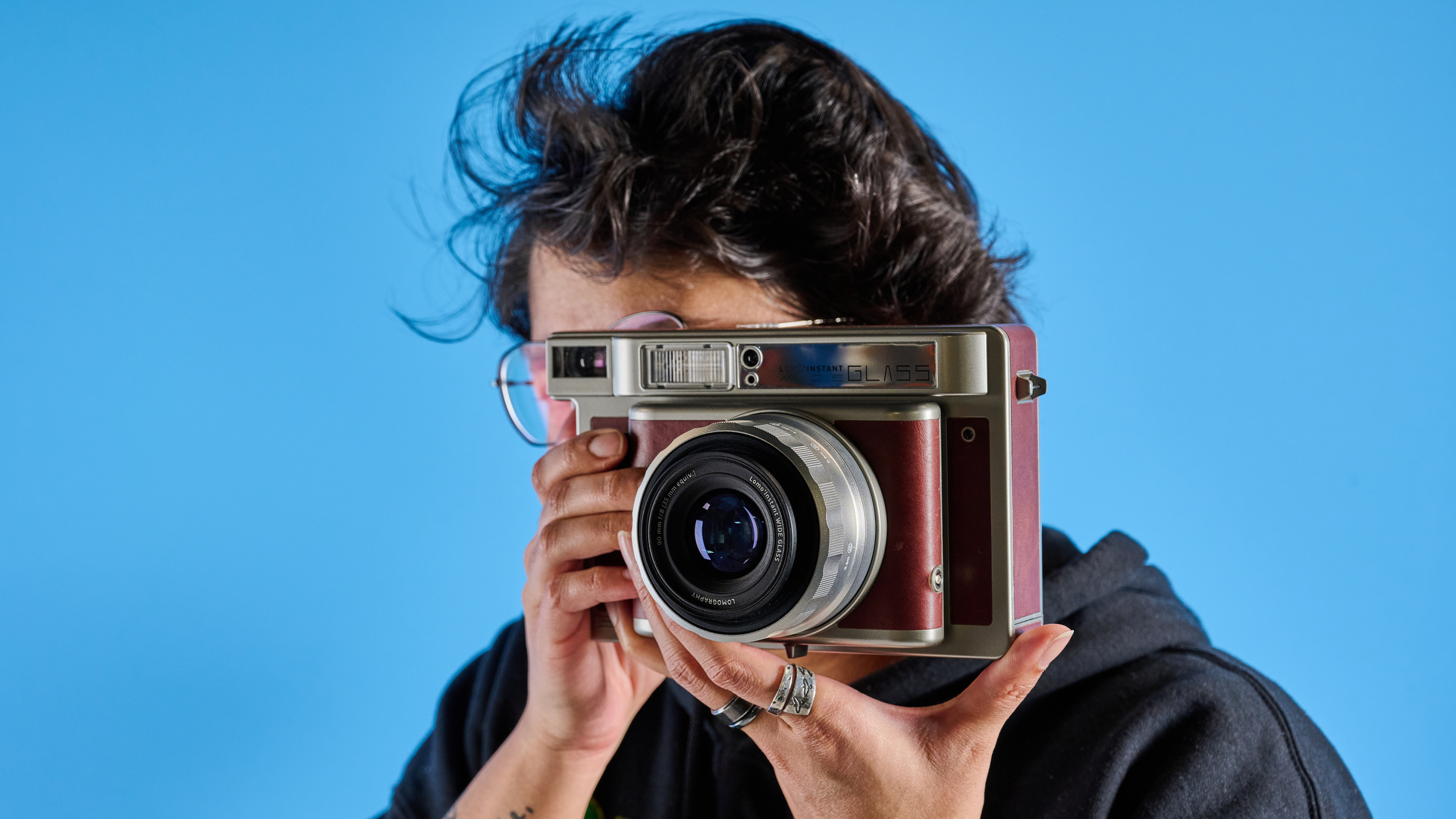
The Lomography Lomo’Instant Wide Glass is not a small camera — wide format instant cams rarely are as they have to make enough room for the large-sized film. If you thought the Fujifilm Instax Wide 400 had a big footprint, wait until you see the Lomo’Instant Wide Glass. The camera measures 7.3 x 4.6 x 4.6 inches and is the biggest instant camera I’ve tested so far.
Weighing 2lbs, it’s also heavier than the 1.4lbs Instax Wide 400. When I held it up to my face for our studio photographer to take product shots, I couldn’t help but laugh because the camera looked far bigger than my head. And yes, I got a few funny looks from strangers when out and about testing it.
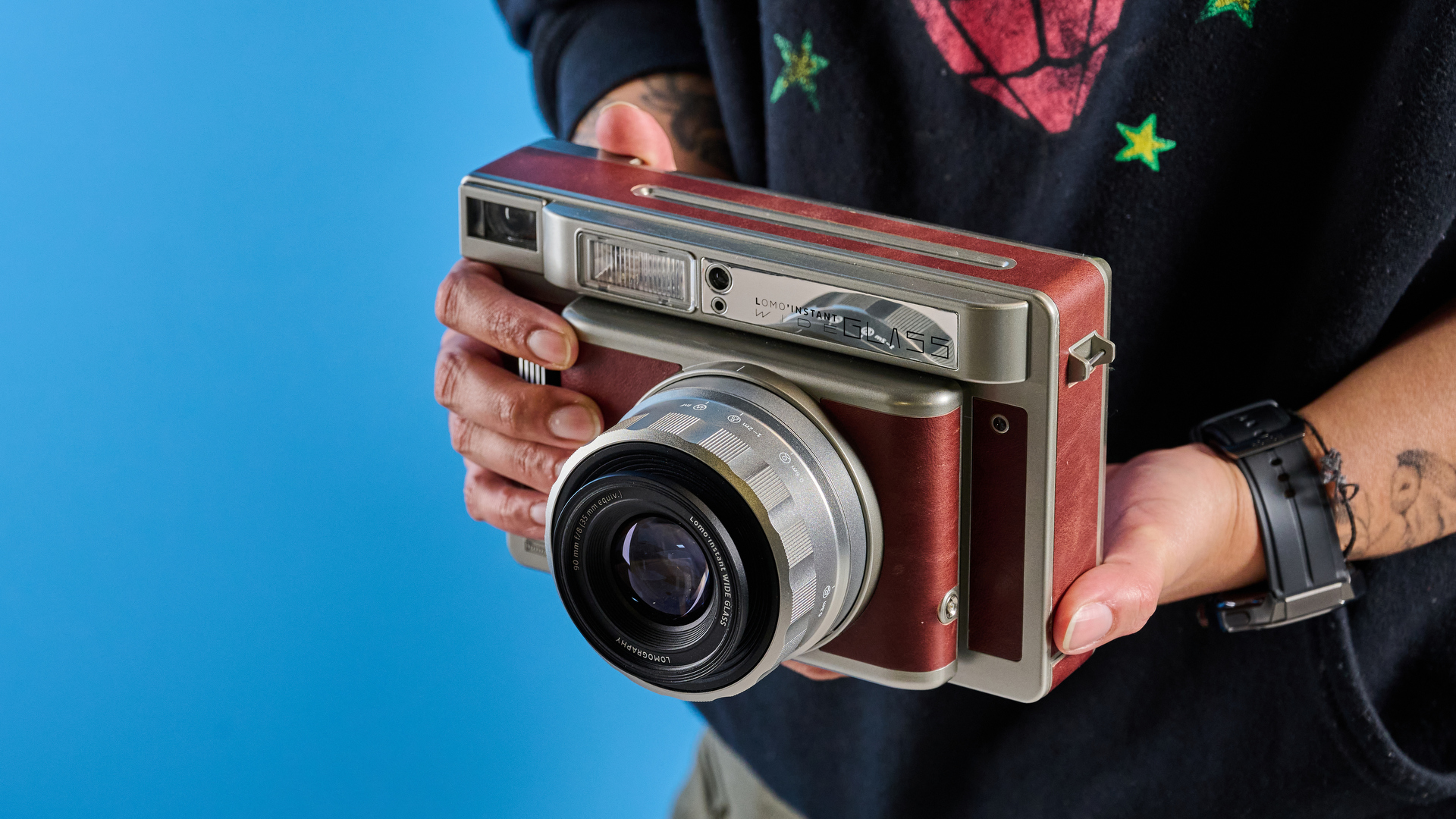
The Lomo’Instant Wide Glass doesn’t have a protruding sculpted grip, which means handling the camera is awkward and slightly uncomfortable. I much prefer the Instax Wide 400’s ergonomic design as, when I was testing it, I could hold it confidently with one hand.
So, given its dimensions and weight, you’ll need to use both hands to shoot with the Lomo’Instant Wide Glass. Trust me, I tried shooting single-handedly and nearly dropped it on concrete. While I wouldn’t recommend it, the camera looks like it could survive a drop (again, please don’t do it intentionally). It’s made of hard, high-quality plastic and aluminum.
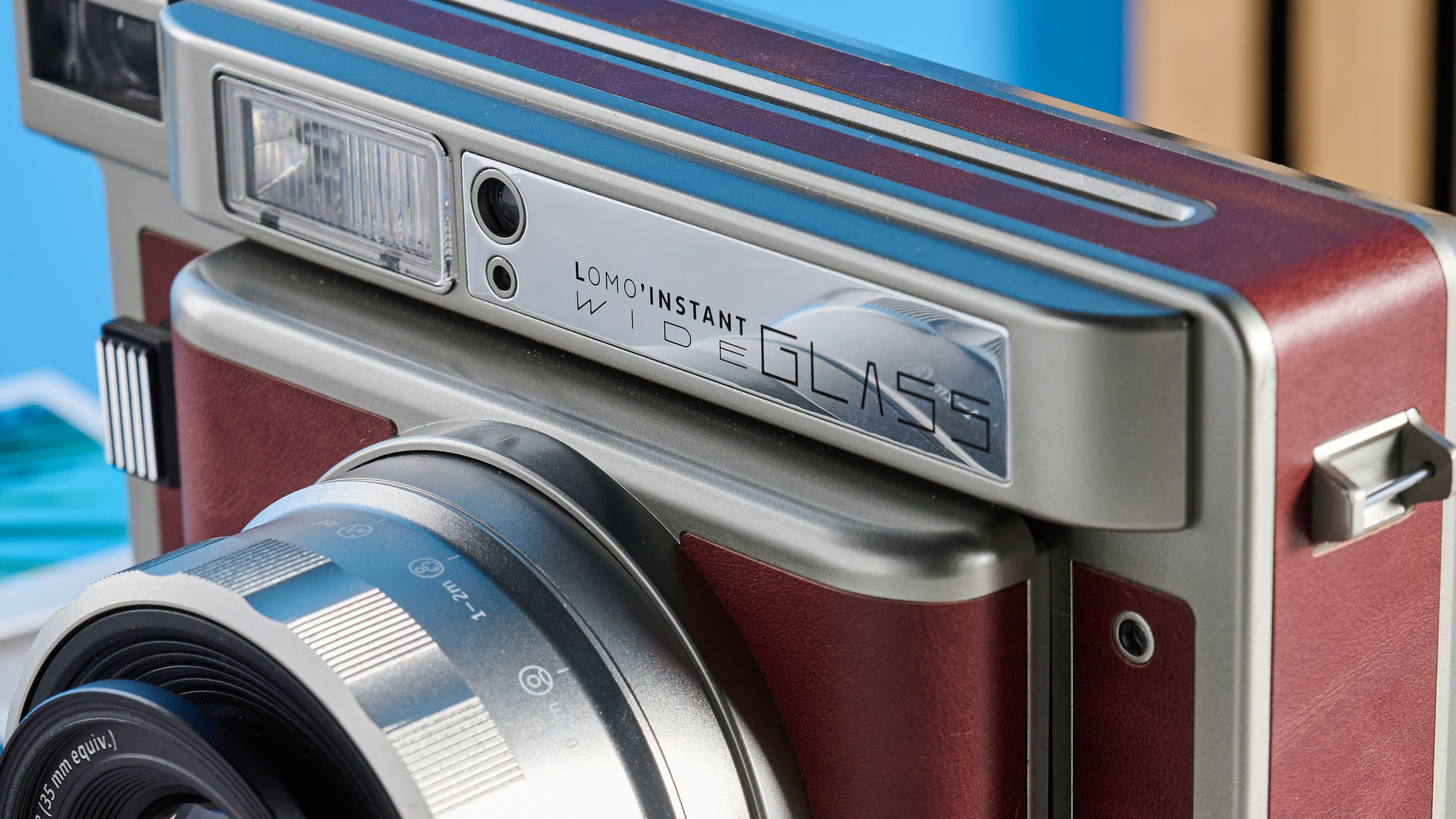
The metal lens barrel, the glass element and the wraparound brown leather-like material give the Lomo’Instant Wide a premium edge. It doesn’t look or feel cheap. I’ve tested a few Lomography instant cameras and this might be one of the sturdiest, unlike the Lomo’Instant Square Glass ($149) and the Diana Instant Square ($129).
The top half of the Lomo’Instant Wide Glass’ front is occupied by a glass-like reflective surface that’s actually made of plastic, and a giant flash. I really wish the camera had a selfie mirror. The surface shows a distorted reflection and can’t really be used to take selfies.
Lomography Lomo'Instant Wide Glass review: Lens & viewfinder
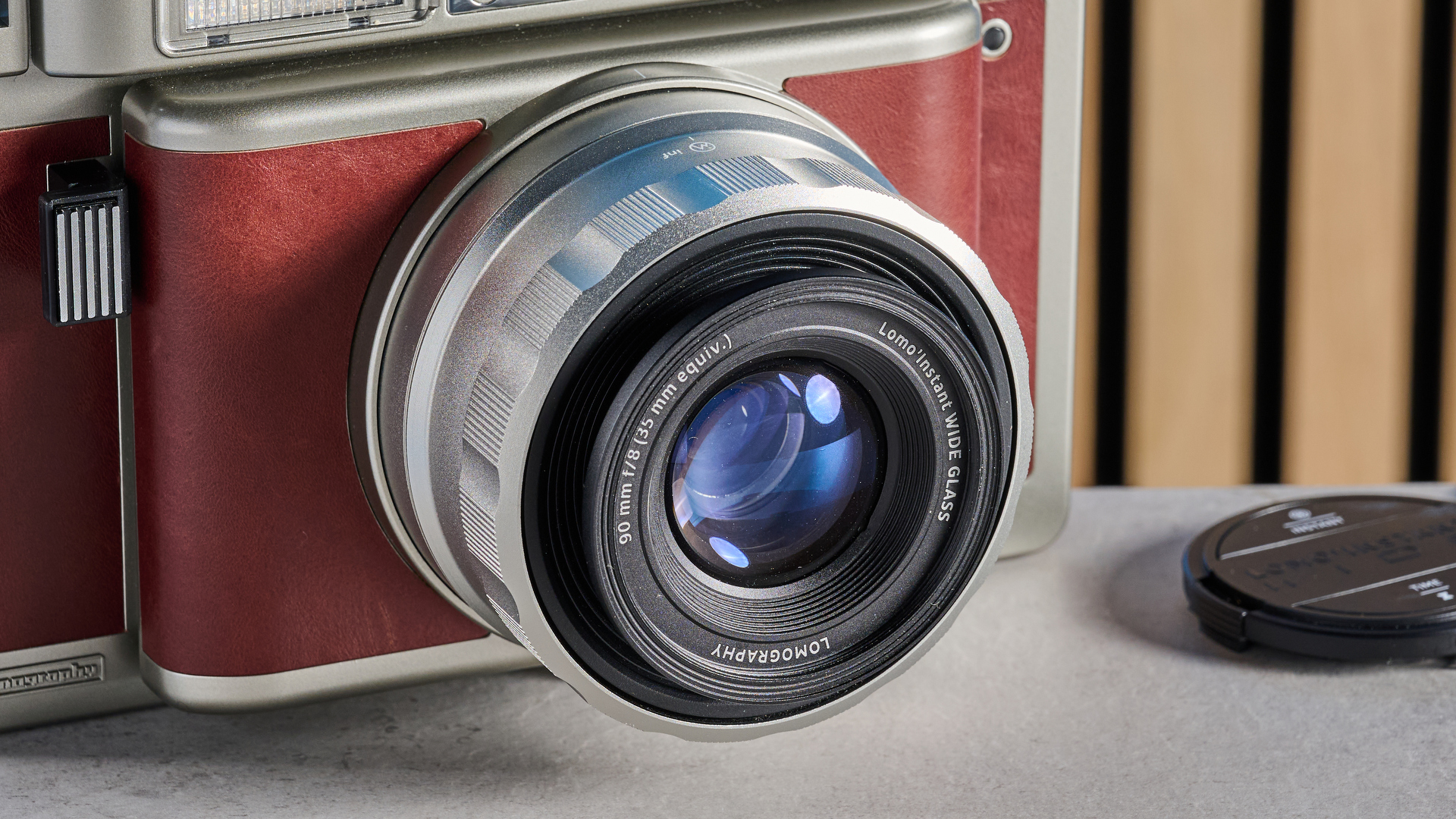
The Lomography Lomo’Instant Wide Glass is fitted with a 90mm retractable lens with four focus zones: 0.3m (macro), 0.6m (close-ups), 1-2m (portraits) or ∞ (landscapes). This means that you should be able to use the camera for any type of shot you want.
As for aperture, the Lomo’Instant Wide Glass has two settings: f/8 and f/22. By default, it’s set to f/8. If you want to switch to f/22, you’ll need to use the lever on the back, which I’ll discuss in the controls section below.
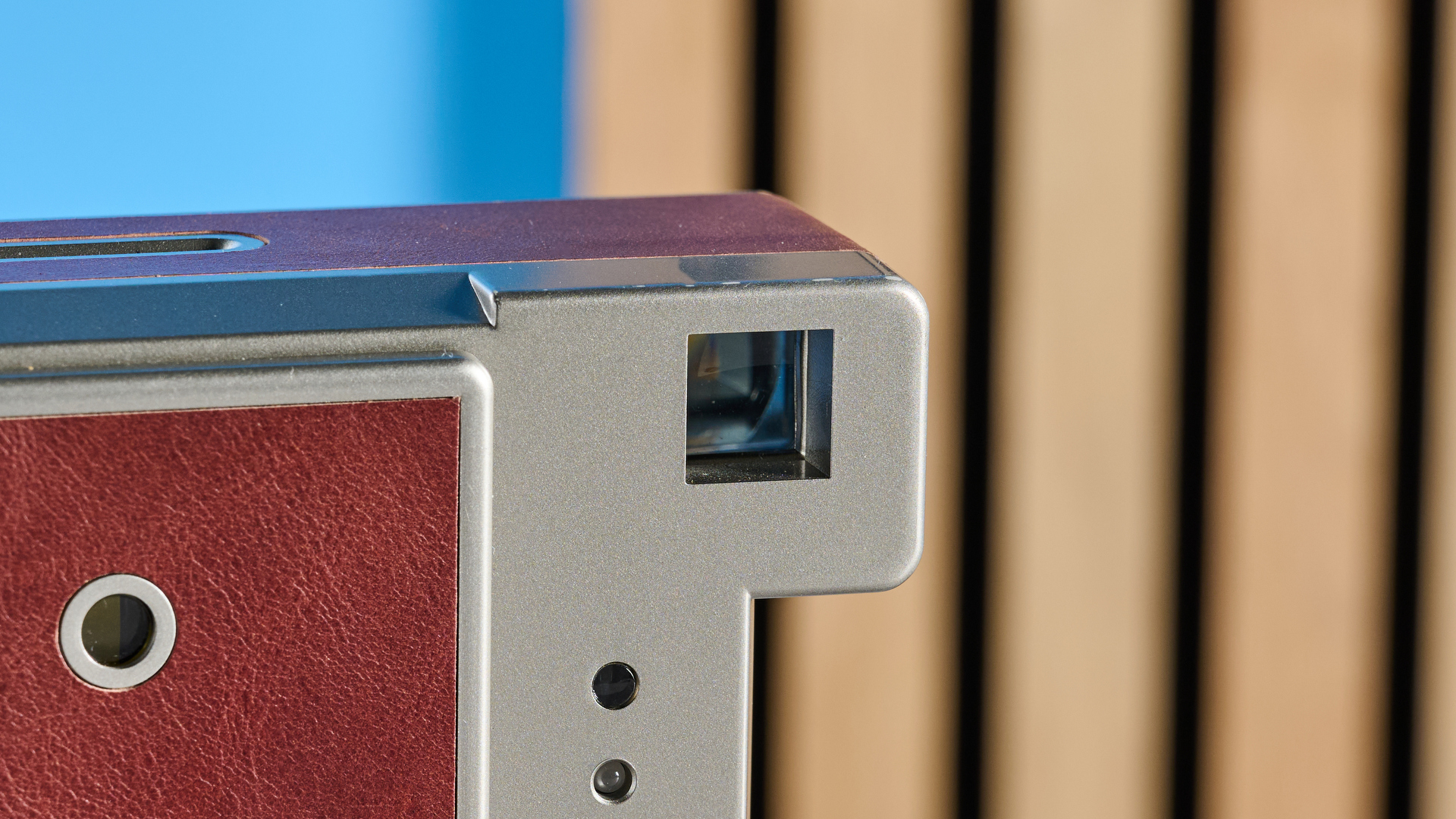
The optical viewfinder (OVF) is a little tricky to use. It’s small which makes it difficult to look through, especially if you wear prescription glasses like I do. It’s also offset from the lens and I found myself double- and triple-checking if the lens was actually pointing at the subject.
Just bear in mind that this will result in some missed shots, so don’t be disheartened by the amount of trial and error required.
Lomography Lomo'Instant Wide Glass review: Controls
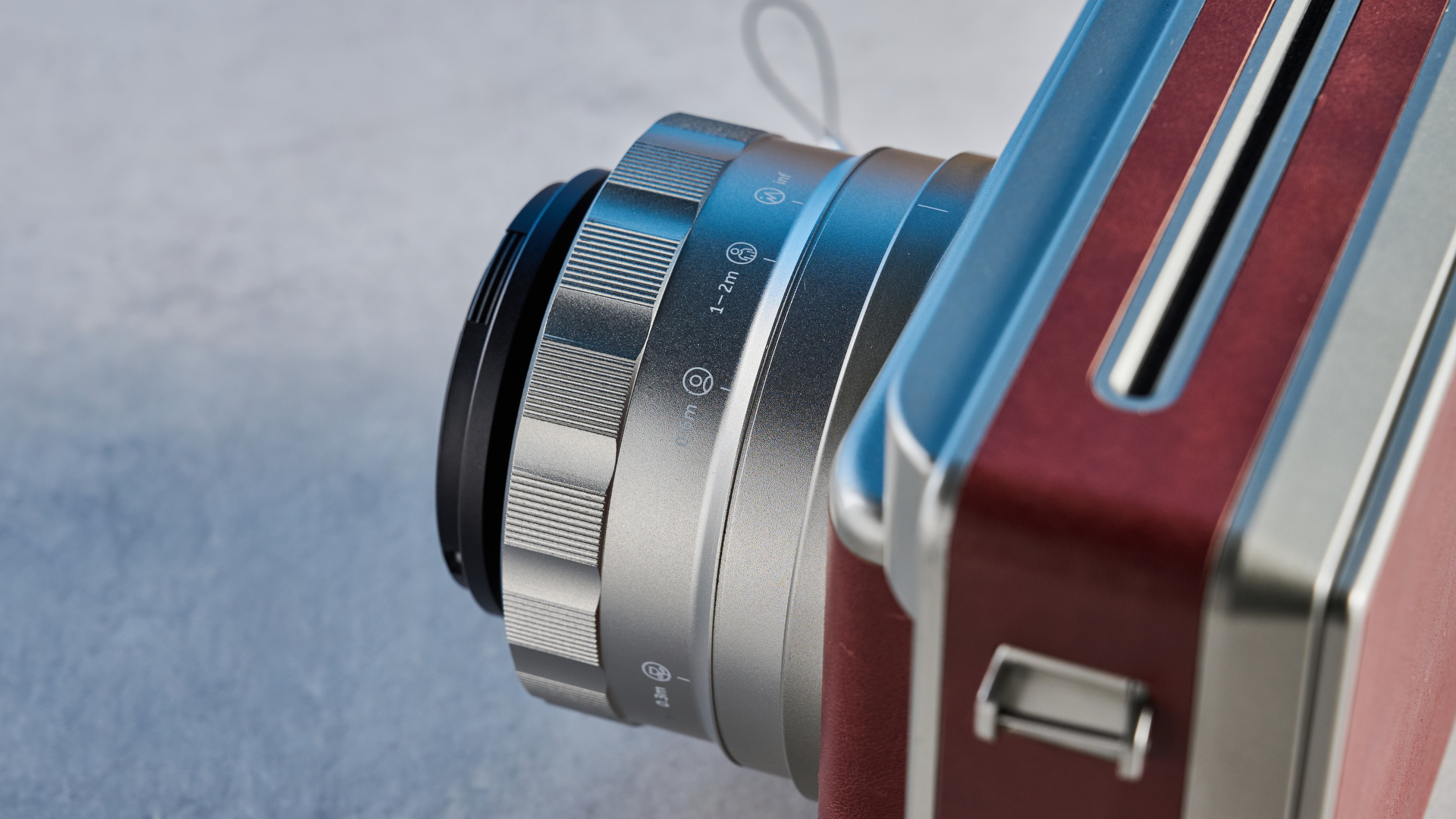
The Lomography Lomo’Instant Wide Glass doesn’t have a lot going on in terms of controls. Let’s start with the front of the camera first. Around the lens, you’ll find a dial. Twisting it lets you swap between the four focus zones I mentioned earlier. It’s easy to do and it feels sturdy enough that you won’t accidentally change settings unintentionally.
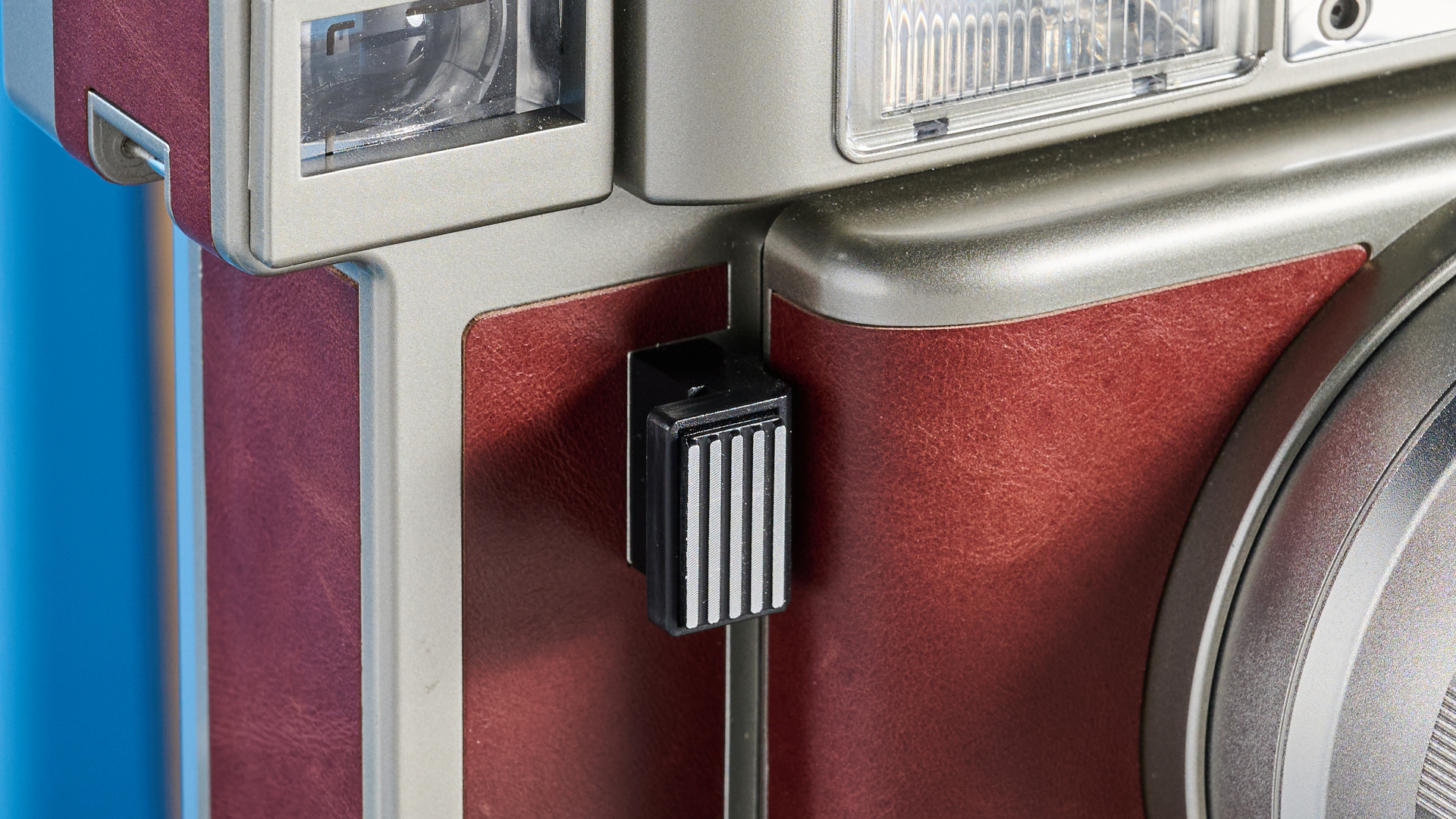
Also located on the front, to the right, is the shutter button — an unusual shutter button, at that. It’s flat with ridges. I had no issues reaching for it and pressing it with my right index finger, but it was difficult while taking selfies.
All other controls rest on the back, next to the film door. These include flash, multiple exposure (MX) and exposure compensation. One thing to remember is that by default, when you turn the camera on, the flash is enabled, so remember to press the flash button to switch it off.
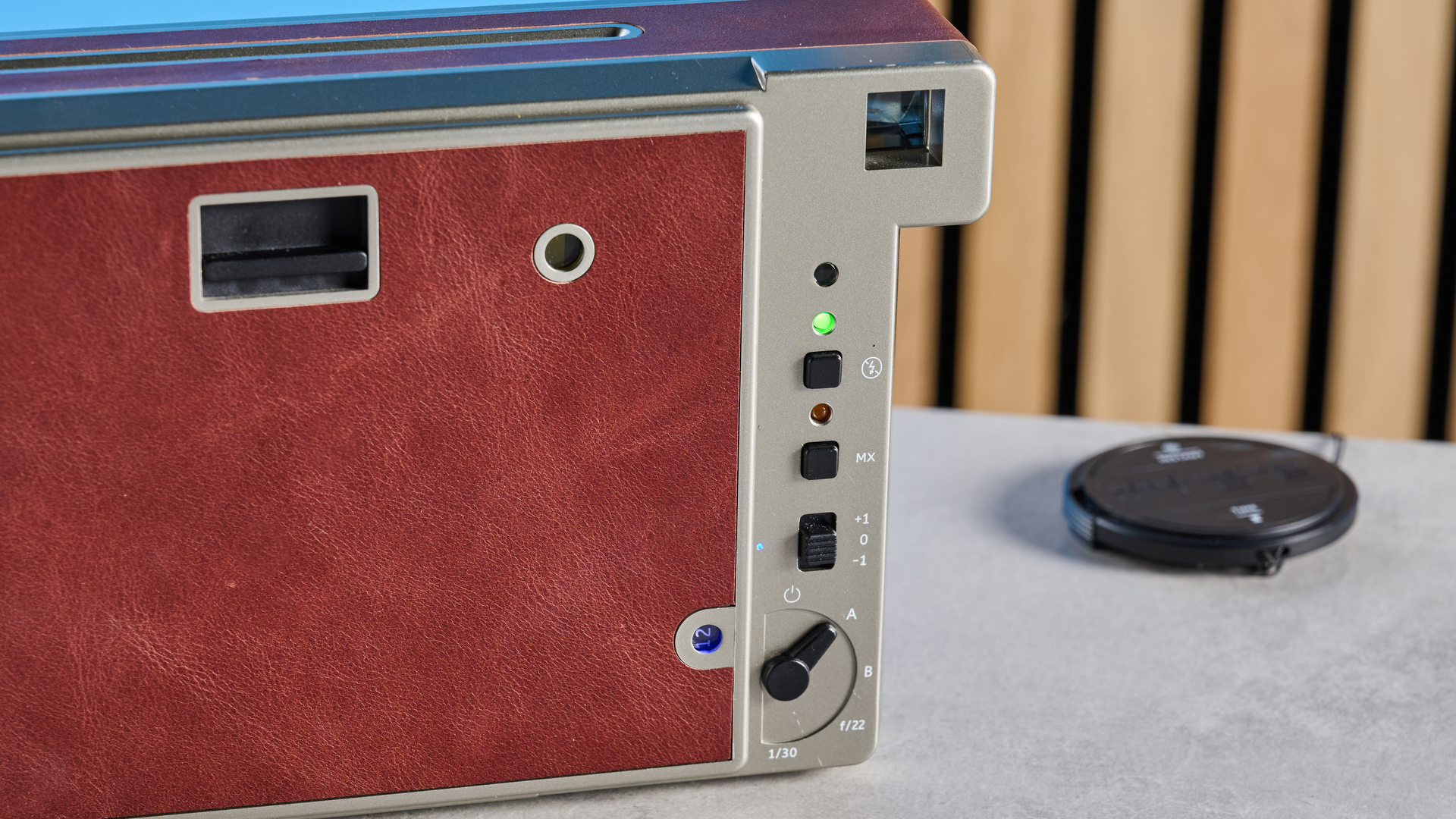
Under these, you’ll find a lever which looks a bit like a speedometer needle. This is used to turn the camera on, switch to bulb (30s shutter speed), aperture (f/22) and 1/30s shutter modes. All of these controls and buttons are straightforward to use and you quickly get accustomed to them.
I also like that there are a few LED lamps on the back, scattered between buttons. These let you know in case multiple exposure mode is enabled, the flash is ready to fire, and if you need to swap out batteries.
The camera also comes with a wireless remote which doubles as a lens cap. You can use this to remotely trigger the Lomo’Instant Wide Glass’ shutter and it’s a great tool for social gatherings or group shots.
Lomography Lomo'Instant Wide Glass review: Image & print quality
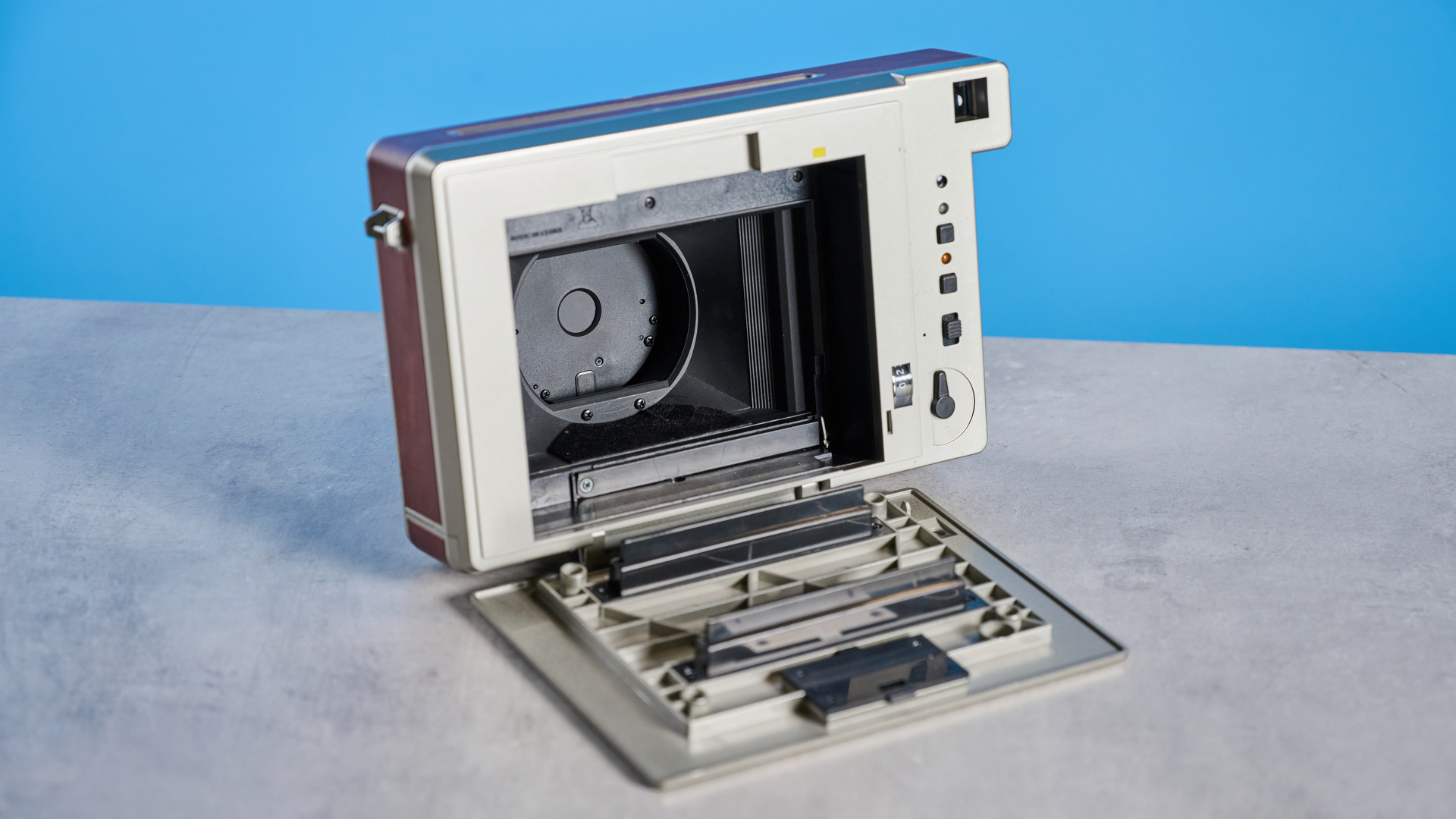
The Lomography Lomo’Instant Wide Glass takes beautiful, sharp photos in bright conditions, and I’ve been very pleased with the ones I captured during testing. The lens and wide film result in a capacious field of view, too, providing context to photos.
The film quality itself is great and it takes just under 90 seconds for prints to develop.
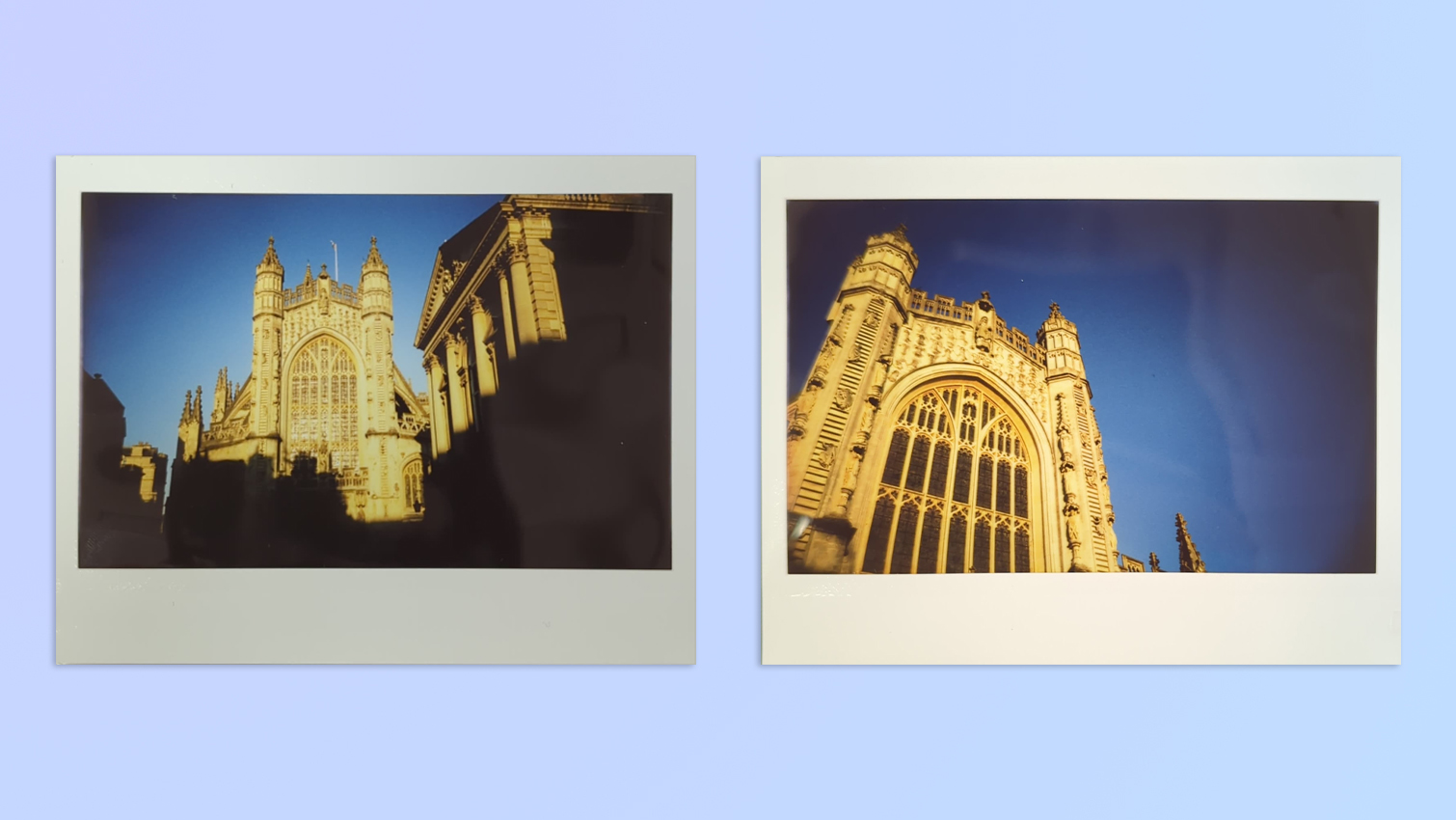
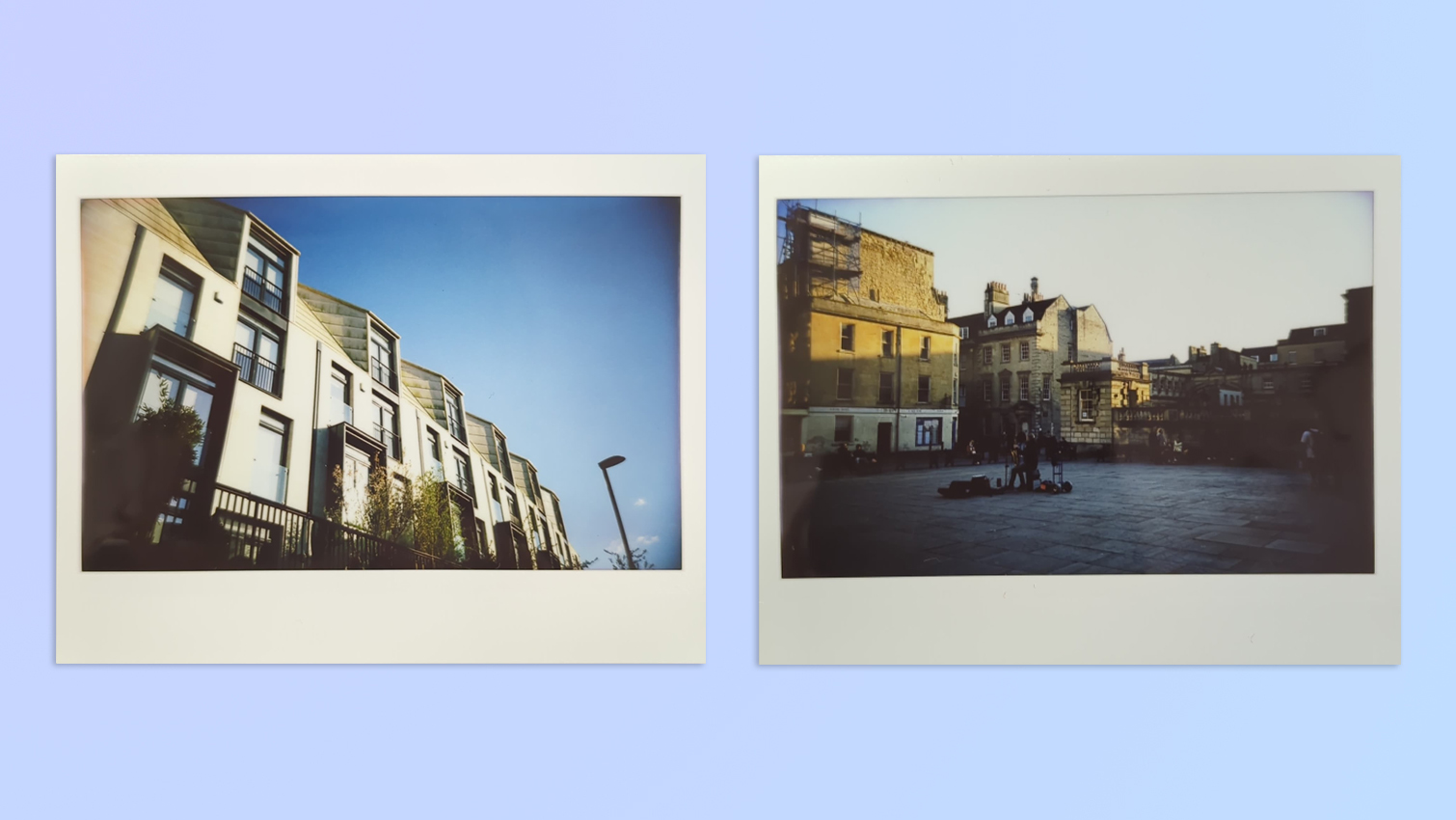
I love the photos (above) I took of the square and abbey in Bath, U.K. on a stunning and sunny day. When I looked at the photos closely, I could clearly make out the design on the large windows in the first two photos. Similarly, I could also easily distinguish between the individual balcony railings in the third shot.
Photos taken on the Lomo’Instant Wide Glass appear sharper — thanks to the glass lens — than the ones I’ve previously taken on the Fujifilm Instax Wide 400 (which uses two plastic elements in its lens).
The camera has done a fantastic job of capturing the shadows in the first photo — and this is also thanks to the color science used by Instax wide film.
I have noted that every time I’ve shot on a wide format camera with Instax wide film, colors have appeared more accurate and faithful, especially compared to smaller film formats (like Instax mini or Polaroid Go film).
And because wide format film can capture more of the scene, the Bath Abbey looks as grand as it does in person.
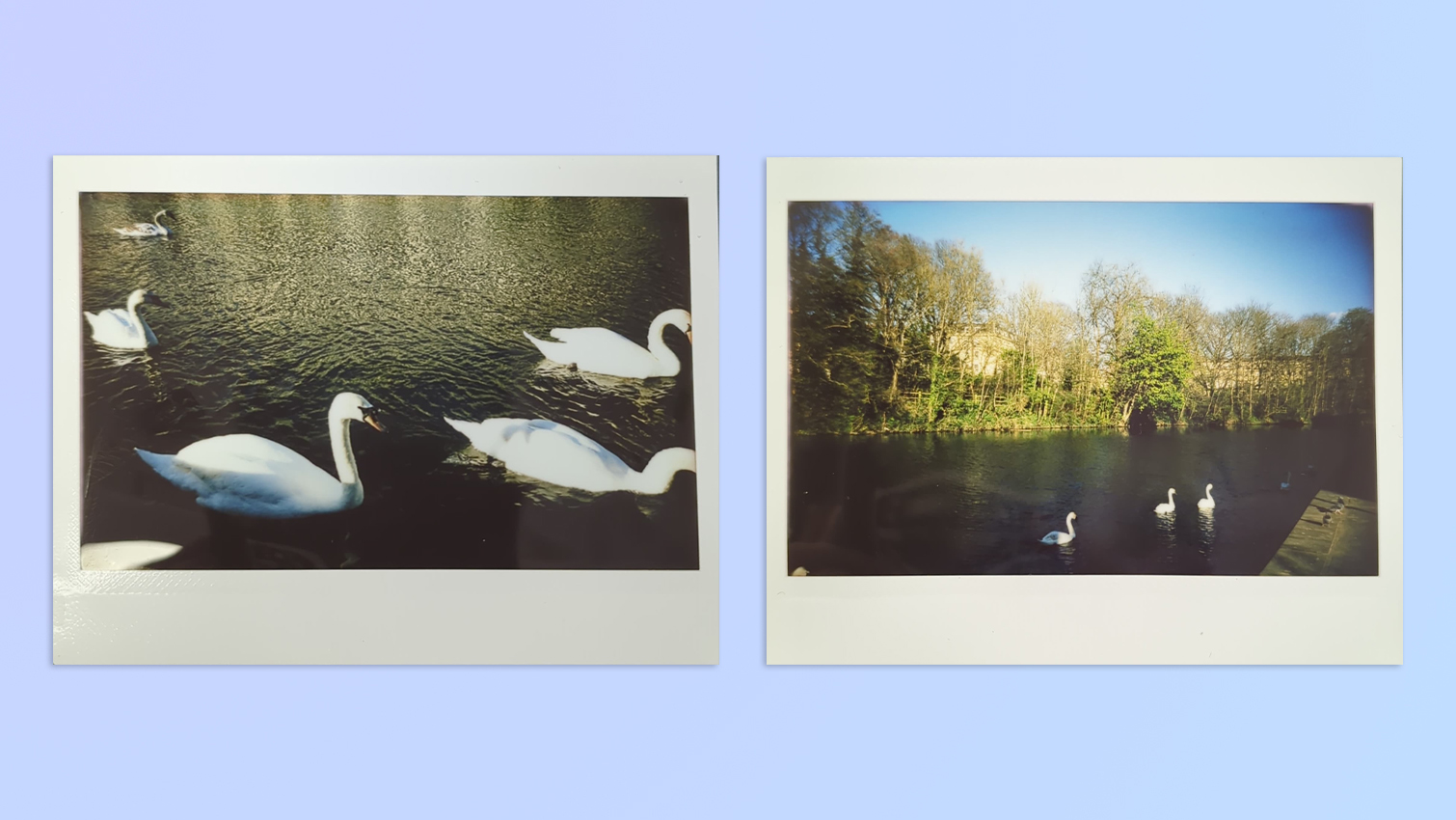
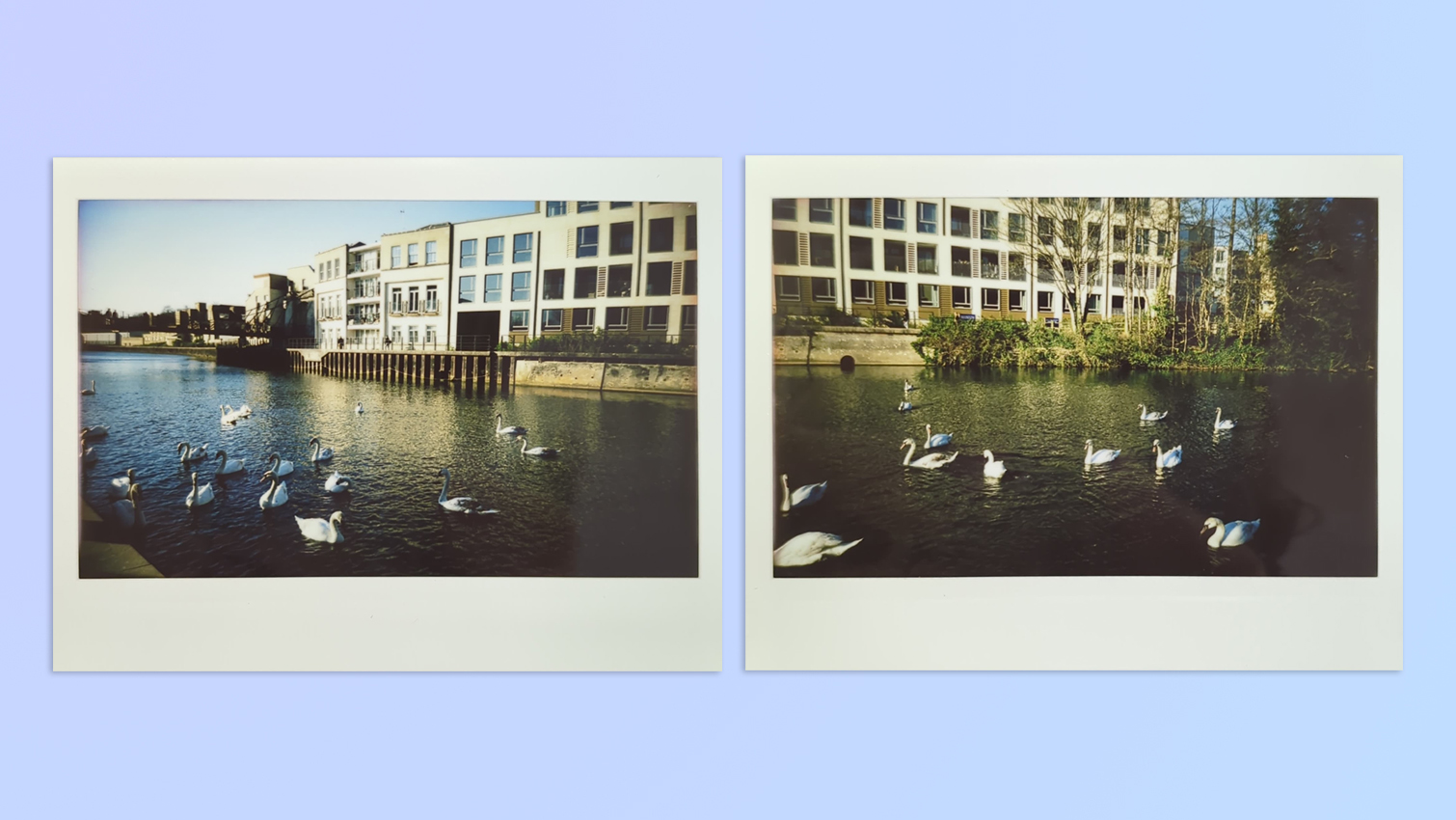
My camera reviews are incomplete without photos of swans swimming and pigeons scuttling about at the river near our office. I adore how the photos turned out in the gallery above. I like that, in all of the photos, you can see shades of orange in the swans’ beaks — and I have to give credit to the Instax wide film’s color science again.
Ripples in the water have been captured exceptionally well too, showing the sharpness of the lens once again.
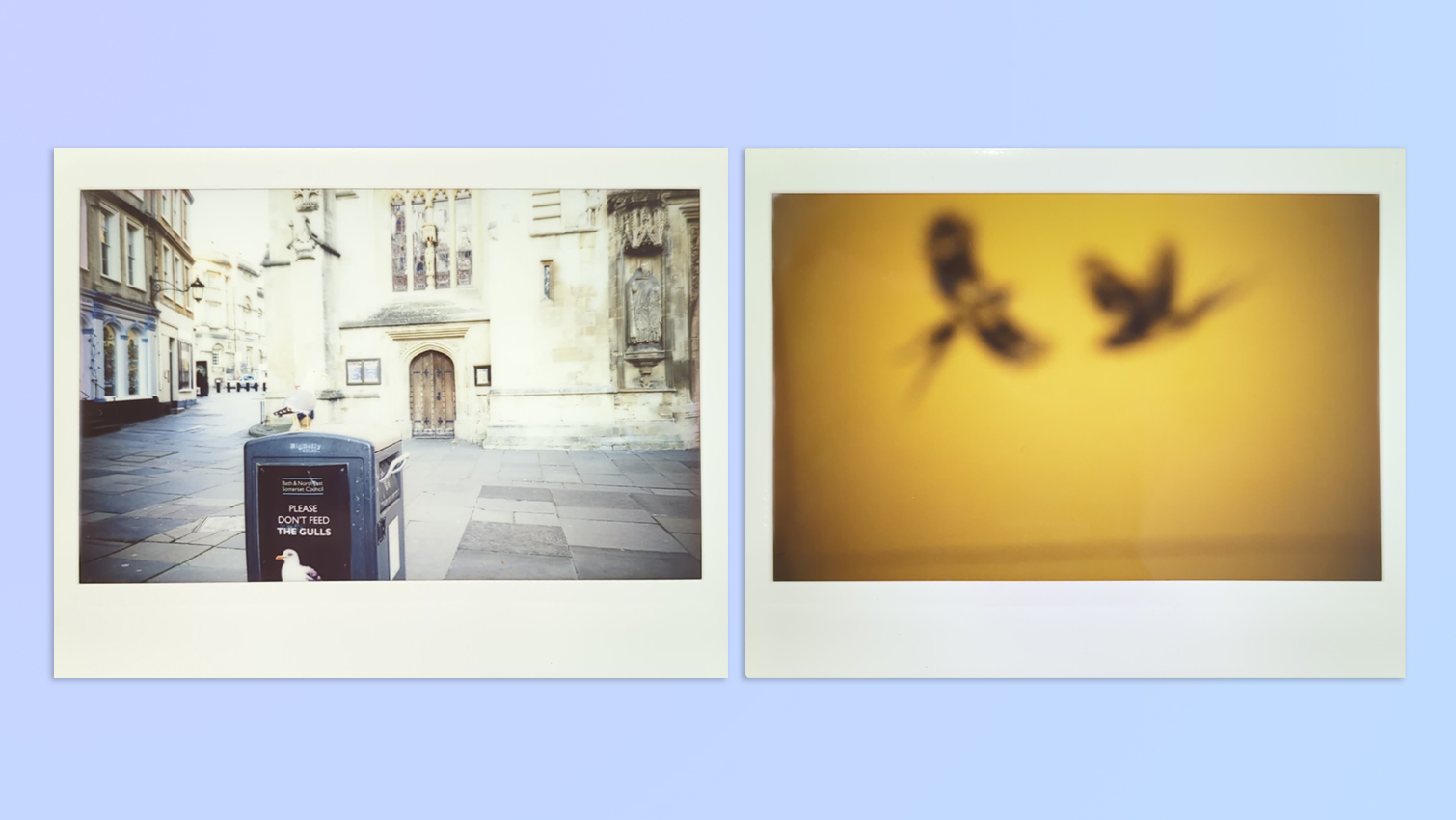

But like with other instant cameras, instant photography takes some trial and error, and you can see a few examples of my ‘failed’ shots above. In the first photo, I’d left the flash on (which is why I advised you earlier to check) and the result is over-exposed and blown out. It’s difficult to distinguish the seagull atop the bin from the background.
The Lomo’Instant Wide Glass’ focus zones can be tricky to wrap one’s head around too. I’d estimated the distance and set the zone to 1-2m for the second and third shot, and both photos are blurry and out of focus.
And as I mentioned before, selfies can be difficult to take. The fourth image isn’t in focus — although I somehow managed to place myself in the centre of the frame without a selfie mirror, so I’ll take that as a win. If you want a wide format camera for selfies, I’d recommend the Fujifilm Instax Wide 400 instead as it never lets me down.

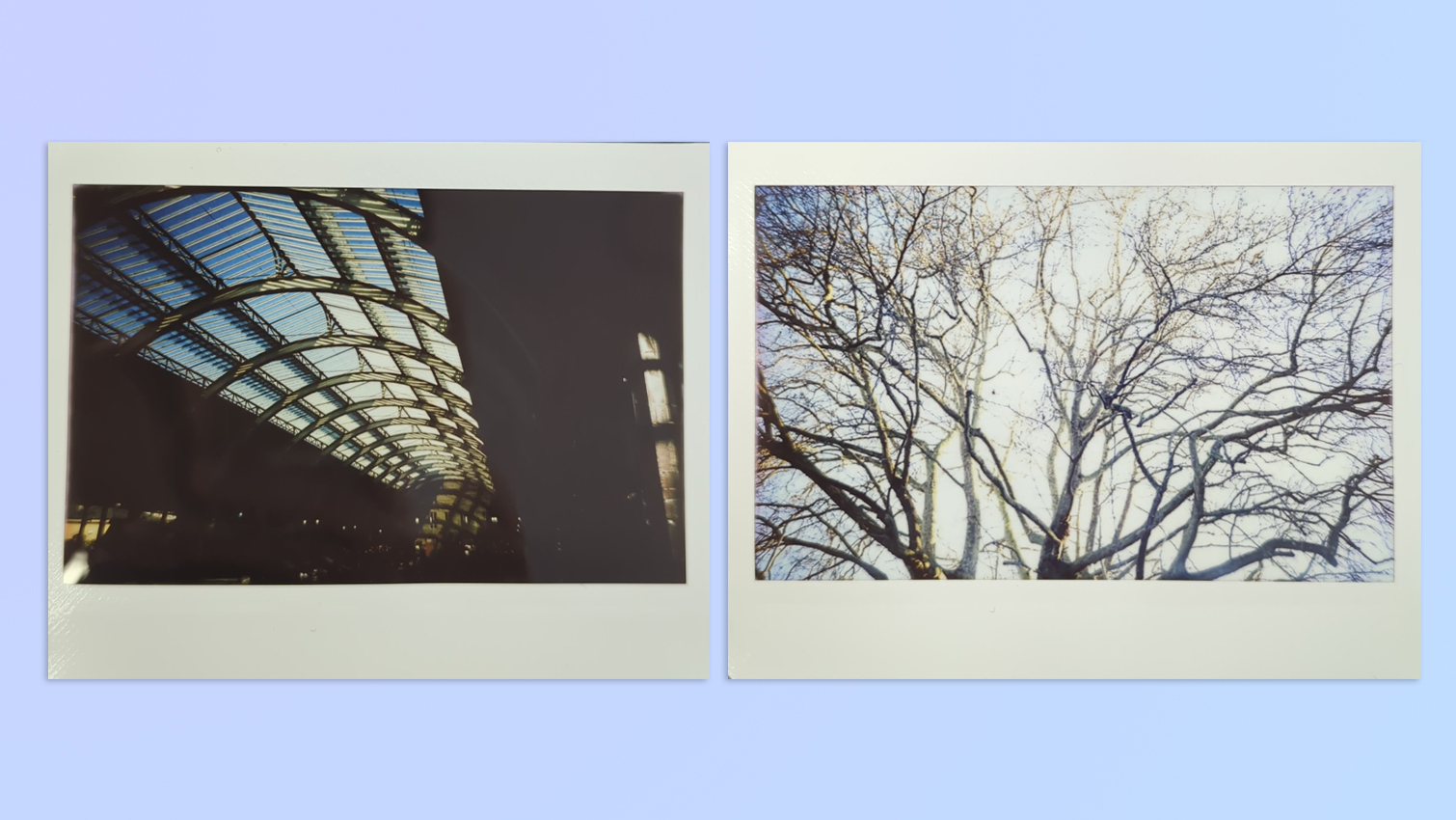
Overall, though, I’m stoked with most of the photos I’ve taken. The Lomo’Instant Wide Glass performs far better than the Diana Instant Square and is on a level playing field with the Instax Wide 400.
Lomography Lomo'Instant Wide Glass review: Film cost & yield
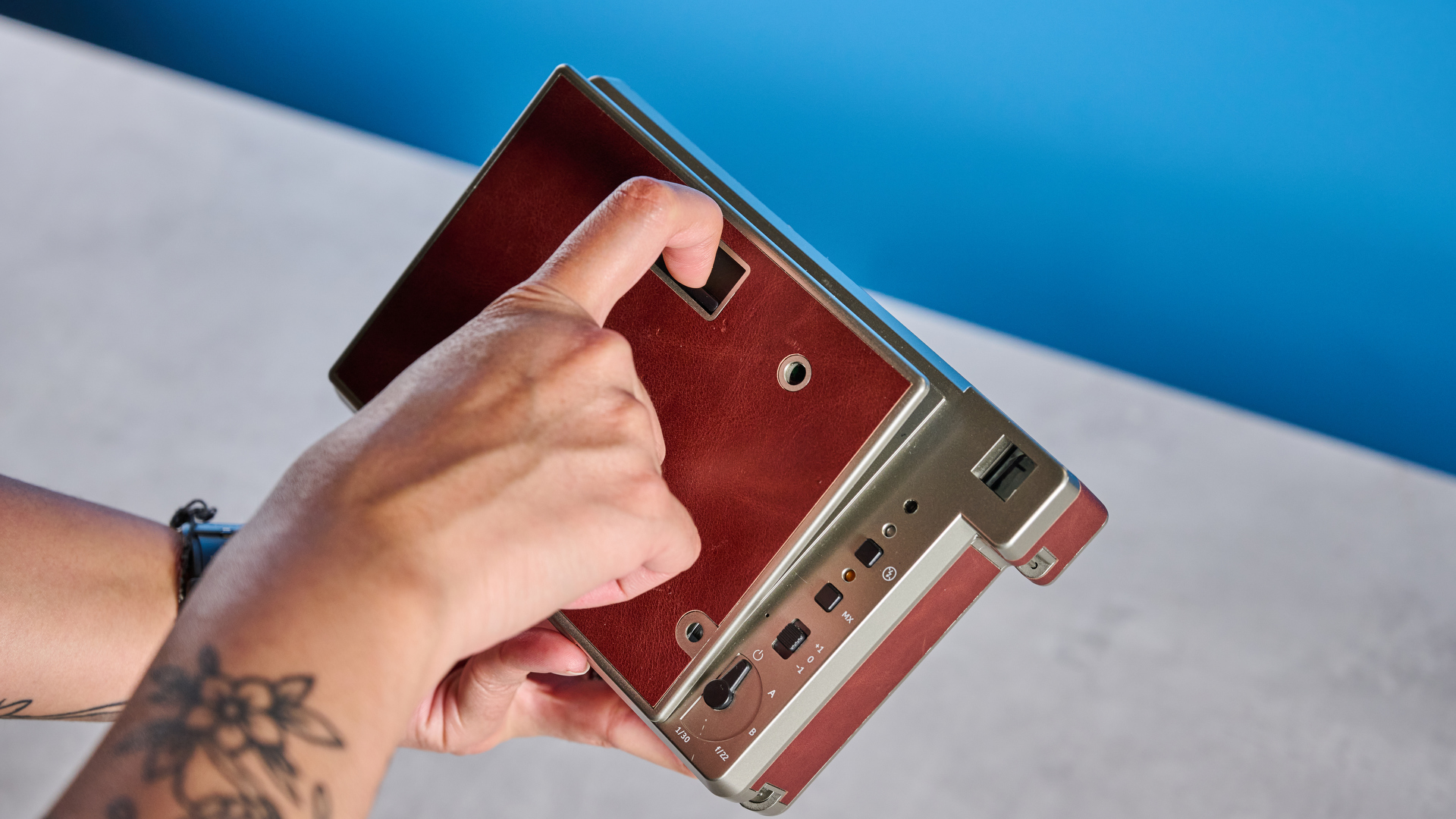
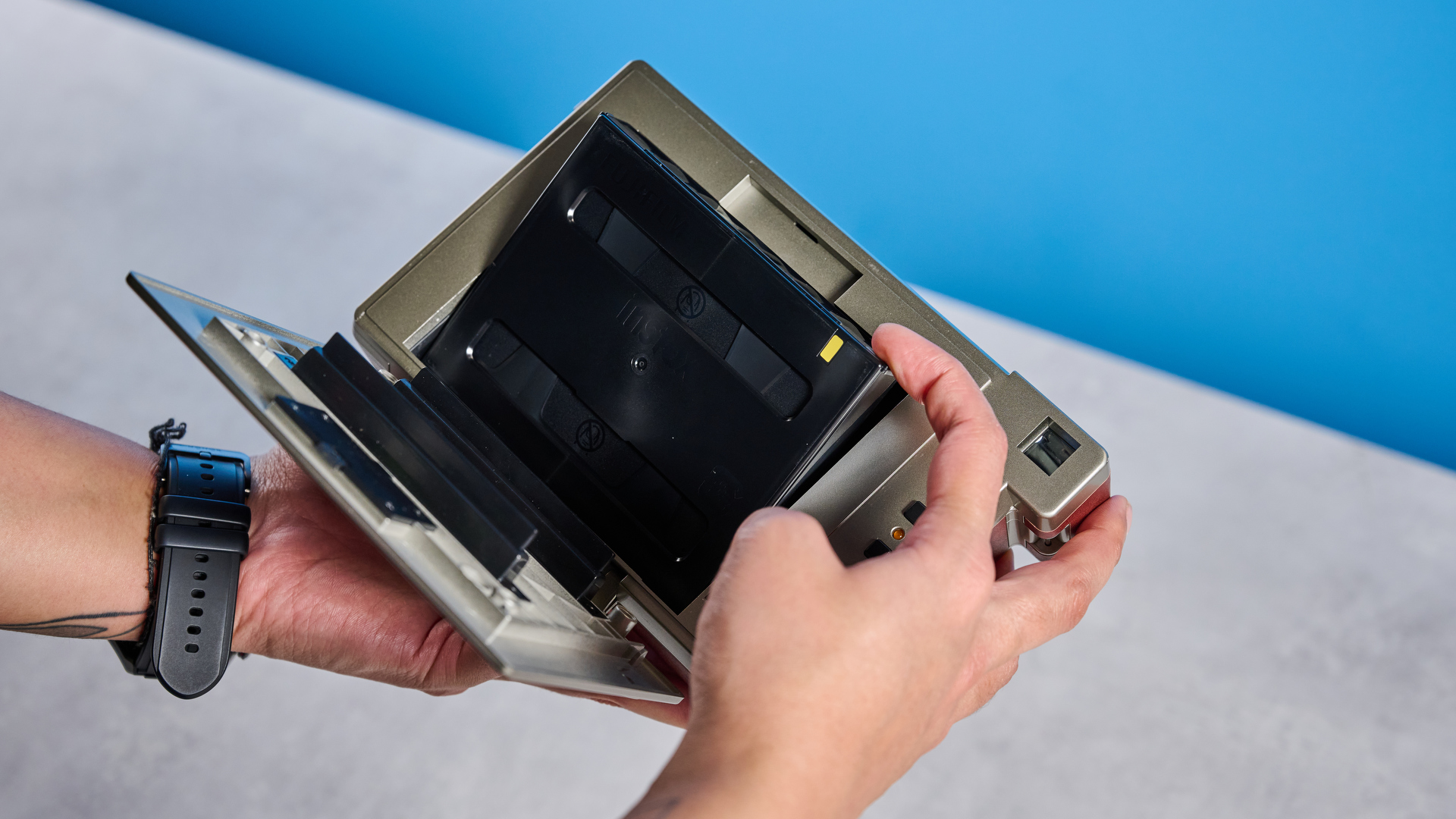
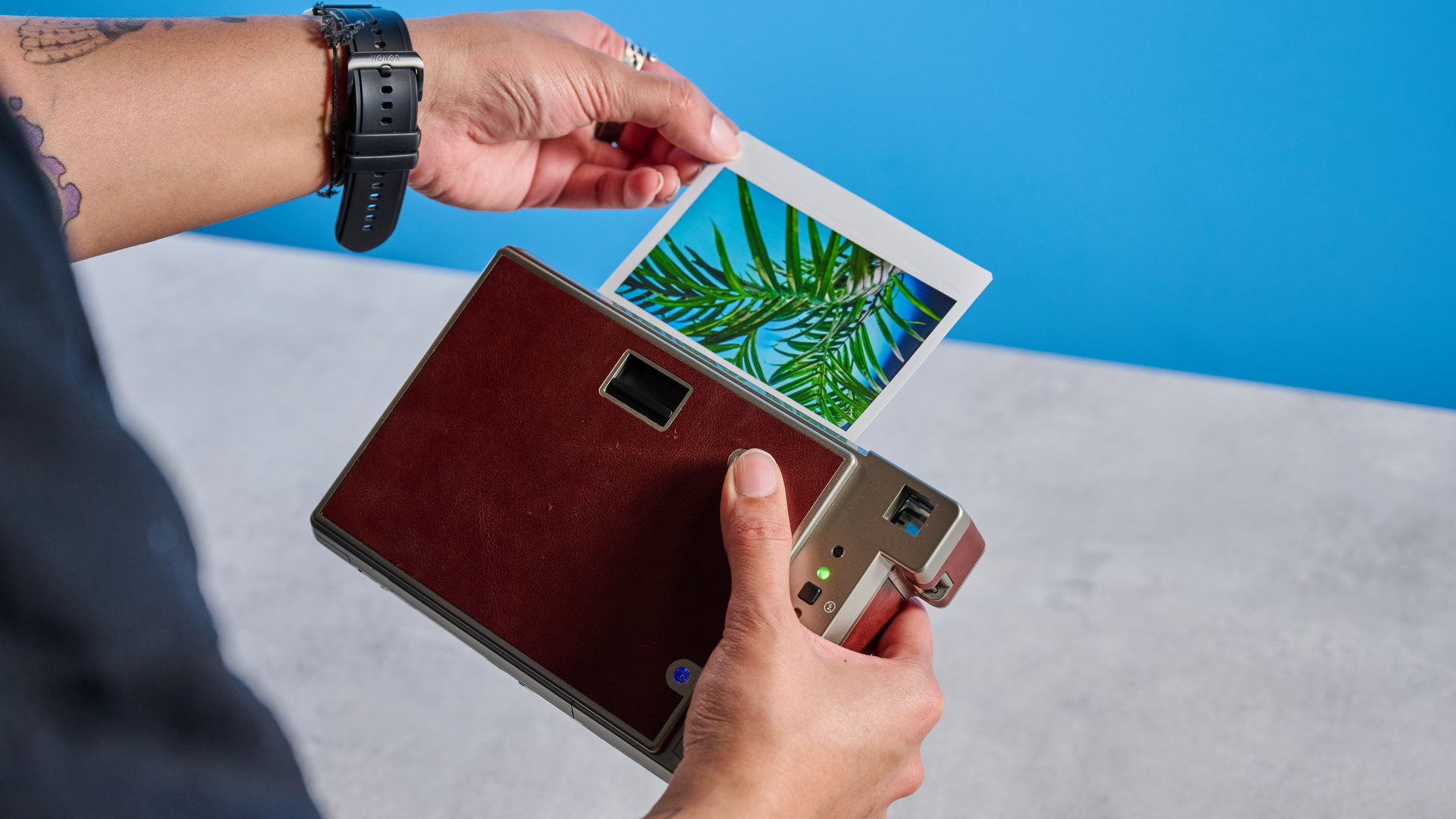
Similar to the Fujifilm Instax Wide 400, the Lomography Lomo’Instant Wide Glass uses Instax Wide film which generally cost about $18 / £16 per double film pack (20 pieces of film) — so you’re paying $1.11 per picture. This is similar to Polaroid’s square film, where you pay approximately $1.12 per print.
Lomography Lomo'Instant Wide Glass review: Battery life
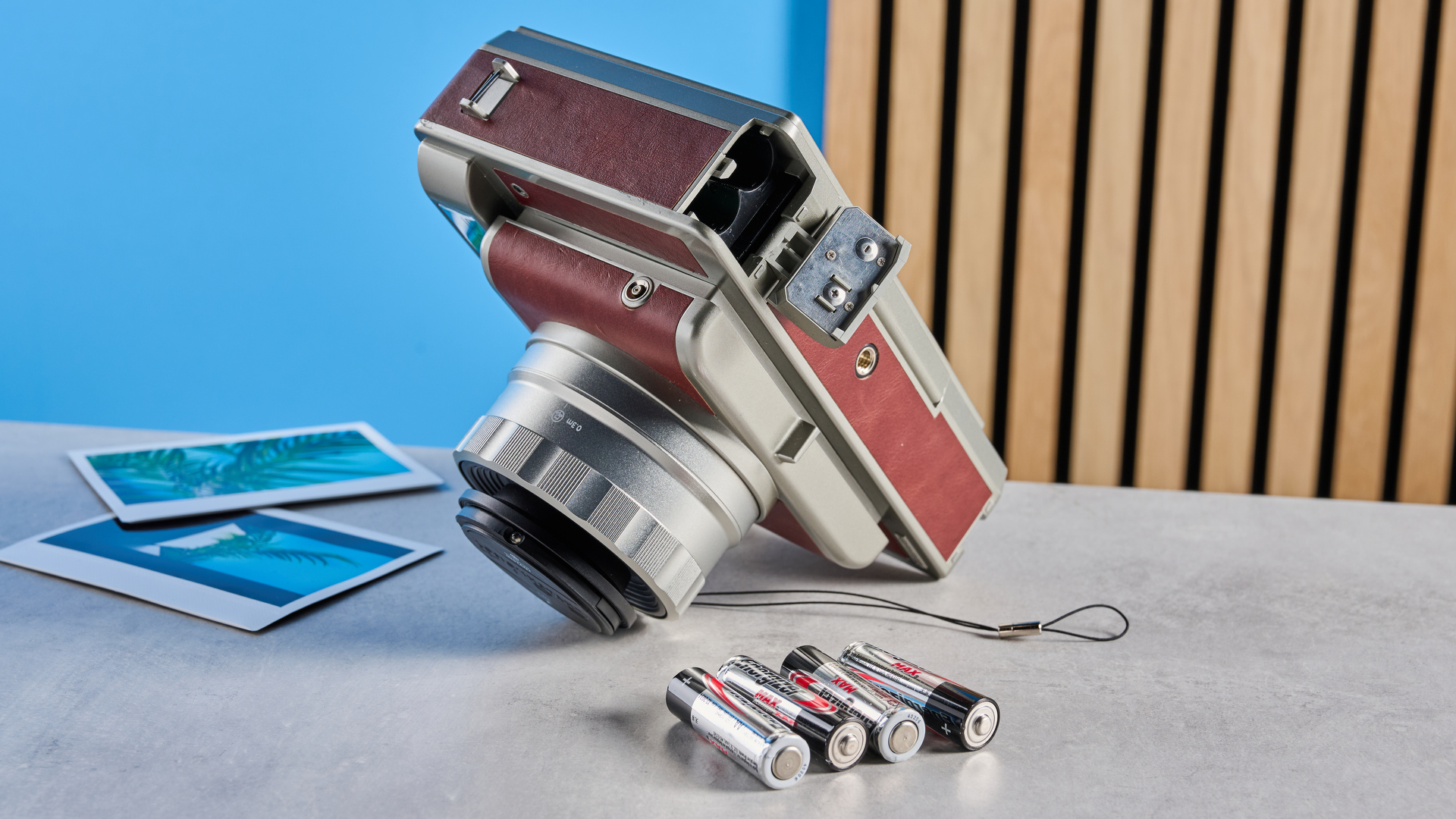
Four AA batteries power the Lomography Lomo’Instant Wide Glass. These are easily procurable but they aren’t the easiest to recycle. If environmental impact is a concern, I recommend using rechargeable ones.
Lomography doesn’t specify how long a set of four batteries can power the Lomo’Instant Wide Glass, unlike the Instax Wide 400 that’s rated for 100 shots (when using disposable batteries).
I really like that the Lomo’Instant Wide Glass has a handy battery life indicator on its rear, located between the film door and exposure compensation switch. A solid blue light means the camera has enough power to shoot and a blinking light means it’s time for fresh batteries.
Lomography Lomo'Instant Wide Glass review: Verdict
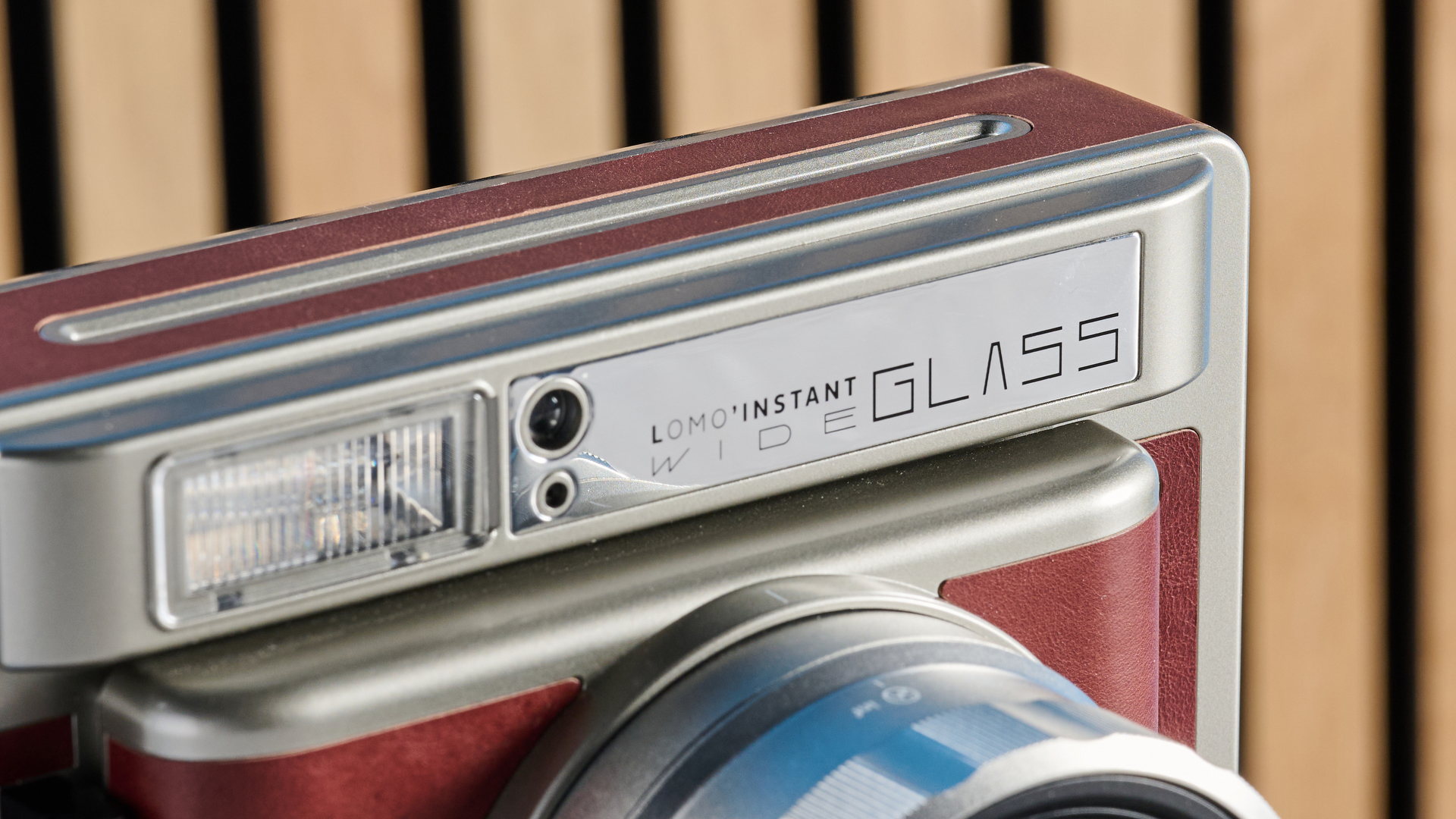
I’ve really enjoyed testing the Lomography Lomo’Instant Wide Glass. I’ve taken some of my best instant photos with it, as the glass lens helps produce sharp images with plenty of detail. It’s great for landscape photography as wide film captures a lot of the scene. It’s easy to use too, and it lets you get creative with multiple or long exposures.
But let’s face it: this is a very large camera. Handling it is a little awkward and it looks silly, to be frank. It also uses disposable batteries that aren’t environmentally friendly, and there’s no selfie mirror.
At the end of the day, though, it’s a fantastic instant camera that stuns with its performance. It’ll be a sad day for me when I have to return the Lomo’Instant Wide Glass to Lomography as I wish it could be part of my photography arsenal.

Nikita is a Staff Writer on the Reviews team at Tom's Guide. She's a lifelong gaming and photography enthusiast, always on the lookout for the latest tech. Having worked as a Sub Editor and Writer for Canon EMEA, she has interviewed photographers from all over the world and working in different genres. When she’s not working, Nikita can usually be found sinking hours into RPGs on her PS5, flying a drone (she's a licensed drone pilot), at a concert, or watching F1. Her work has appeared in several publications including Motor Sport Magazine, NME, Marriott Bonvoy, The Independent, and Metro.
You must confirm your public display name before commenting
Please logout and then login again, you will then be prompted to enter your display name.
